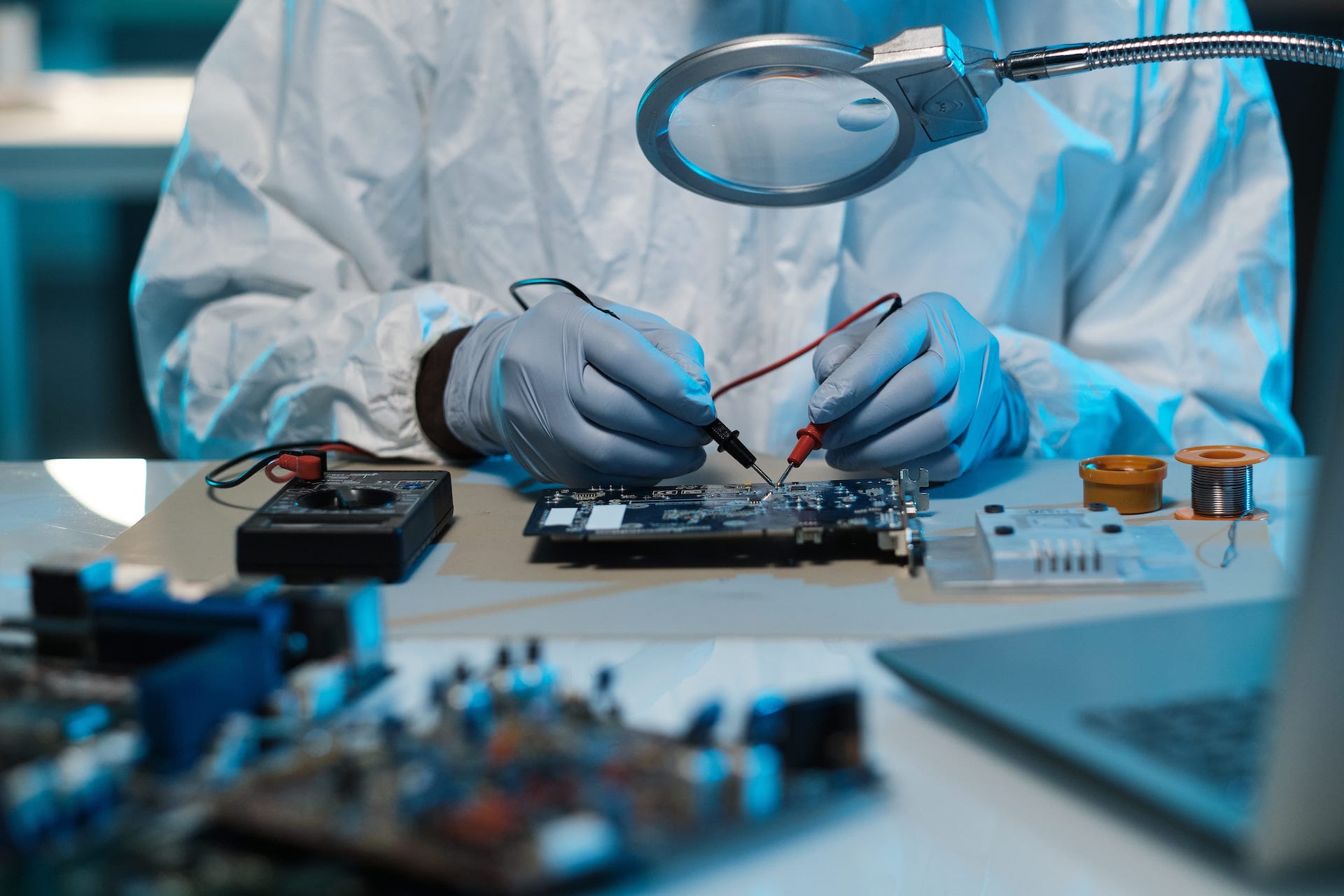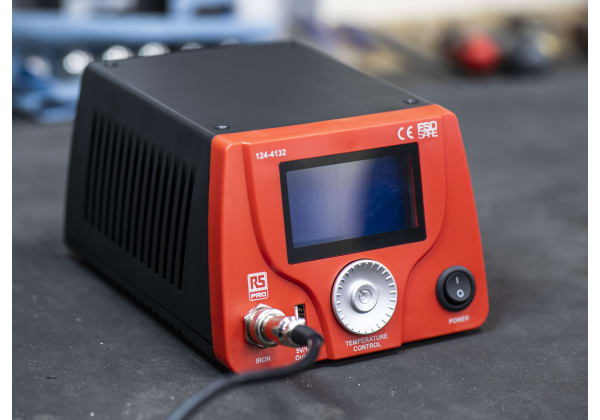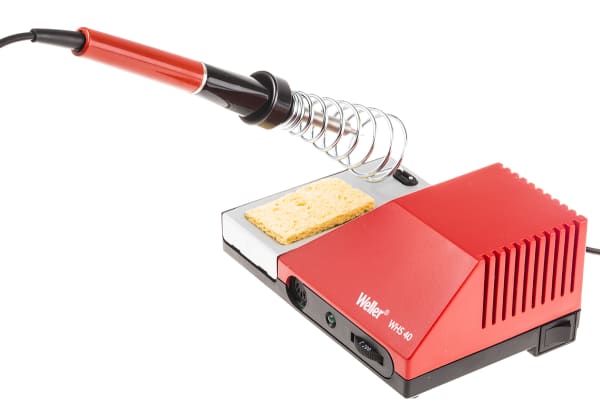- Published 24 Oct 2025
- Last Modified 24 Oct 2025
- 8 min
Solder Flux Types: Troubleshooting Common Soldering Issues
Soldering is a vital part of electronics manufacturing, but soldering correctly requires the right tools and techniques. If you’ve ever wondered about how to make the right choice when it comes to solder flux types, we’ve got you covered with this guide.

Soldering is a vital part of electronics manufacturing, helping to create strong and reliable mechanical and electrical connections. Without high-quality soldering, components such as printed circuit boards and other electronic devices simply wouldn’t function correctly. But while soldering is commonplace, doing it correctly requires the right tools and techniques. If you’ve ever wondered about how to make the right choice when it comes to solder flux types, we’ve got you covered with this guide. Read on to learn how to troubleshoot common soldering problems and gain the expertise to ensure flawless connections every time.
Common Soldering Issues & How to Solve Them with Flux & Paste
Numerous issues can affect the quality of soldering. A solder joint may have a cracked surface, forming a poor electrical connection. Alternatively, too much solder may be deposited in a certain area, creating unnecessary connections and potentially short-circuiting the board. Also, a dry joint may be created with a dull or irregular surface or feature gaps or cracks. Such poor-quality connections may impede circuit board performance or create resistance in the circuit. There are several causes of dry joints, including dirty or oxidised components, or the use of too little heat during the soldering process, which prevents the solder from flowing correctly.
Solder flux types and solder paste electronics can help solve these problems by smoothing the process. Flux and ‘no-clean flux’ – a type of flux that obviates the need for further cleaning following soldering – are chemical cleaning agents that improve solder flow. Solder paste is similar – a mix of solder particles and flux designed to ease the soldering process. Read on to find out how to use these solder flux types correctly and troubleshoot common problems.
Why Flux is Your Soldering Solution: Its Essential Role
Flux is vital because it helps to ensure soldered connections are clean and reliable. Flux removes oxidation (thin layers of rust or corrosion on metal surfaces) and prevents further oxidation during soldering, which can occur when hot metal is in contact with air. Flux also helps molten solder to smoothly flow over surfaces, which ensures strong, even solder bonds.
By keeping things clean and assisting with flow, flux helps to ensure solder adheres tightly and creates reliable connections. Without it, soldered connections run the risk of cracks or gaps or dull, lumpy, or weak joints (known as ‘cold joints’). In short, flux is essential for cleaning metal, protecting it during the soldering process, improving solder flow, and ensuring reliable mechanical and electrical joints.

Choosing the Right Flux Type for Your Problem
There are several different types of flux on the market, including no-clean flux, rosin fluxes, and water-soluble fluxes. Let’s examine their different attributes and applications.
Rosin Flux (RMA, RA)
Rosin is purified pine tree resin. It forms the basis of this type of natural flux. Rosin flux becomes active when heated and cleans and protects the metal surfaces being soldered. It also facilitates good ‘wetting’ – the flow of solder over the joint. There are different types of rosin flux, including R (rosin), RMA (rosin mildly activated), and RA (rosin activated). The strength (activation) of these types of flux varies. For example, RA flux is much more aggressive as a metal cleaner than standard rosin flux. So, you might want to use RA flux if the metal surfaces you are soldering are heavily oxidised, or for heavy-duty soldering work. Mildly activated rosin flux has milder cleaning capabilities than RA flux but is more activated than rosin flux. The disadvantage with RA flux is that components will require further clearing following soldering. Components may also require additional cleaning after soldering with RMA flux.
No-Clean Flux
If you want to solder without the hassle of cleaning afterwards, no-clean flux is the best option. This solder flux type is designed to solder while leaving minimal residue behind. It’s also designed to be non-corrosive and non-conductive. No-clean flux finds favour in everything from surface-mount device soldering, to prototyping projects, to automated electronics manufacturing where post-soldering cleaning is undesirable for cost reasons. When no-clean flux is used, cleaning may still be required if cosmetics are a factor, or if the device is used in particularly demanding applications, such as in aerospace or defence. However, this solder flux type really comes into its own when the manufacturer wants to save time and avoid mess. No-clean fluxes are available as liquids, pastes, gels, pens, or inside solder wire.
Water-Soluble Flux
Water-soluble flux is made from acid but can be cleaned off with nothing but water following soldering. It’s particularly effective (active) at aggressively removing oxidation and dirt from metal surfaces, preventing reoxidation during soldering, and it can be rinsed or sprayed off soldered components after the soldering process. It’s very important that the soldered components are thoroughly cleaned following soldering as the residue left from water-soluble flux is conductive and corrosive. Water-soluble flux is suitable for helping solder components with severe oxidation and in environments where the highest standards of cleanliness are needed. It’s important that components are cleaned precisely and effectively, otherwise, the residue from water-soluble flux can lead to failure over time.
Solder Pastes: Composition, Application & Troubleshooting
Solder paste is a thick material made from mixing solder particles with flux. The solder powder (typically a tin-based alloy) is combined with flux to clean, prevent oxidation, and increase solder flow.
Solder paste is often used in electronics manufacturing to solder components to a printed circuit board. The paste is applied to the board using a metal stencil and surface-mounted devices are placed on solder paste-covered pads. When the board is heated, the solder melts and joints are formed. Solder paste has the advantage of combining flux and soldering processes in one step, creating consistent results. This makes it essential to modern electronics manufacturing applications. Some problems that occur with solder paste include depositing too much paste (which can create undesirable bridges between pins on a circuit board), dry or cracked paste, cold joints, or balls of solder if the paste quality isn’t high enough.
If you’re using solder paste, try to:
- Check the paste’s shelf life
- Apply just enough paste to create a strong connection
- Keep paste refrigerated when not in use to prevent drying it out
- Allow paste to warm to room temperature before use
- Avoid abrupt temperature changes during soldering
- Avoid contamination by using clean tools
- Apply in a clean and temperature-controlled environment
Get these aspects right, and you’ll benefit from the ability of solder paste to create precise joints while combining soldering and flux in one process.
Working with Lead-Free Solder Pastes
Lead-free solder pastes enjoy environmental and safety advantages over leaded solder pastes. Lead-free solder contains no lead and uses alloys such as SAC305, an alloy of tin, silver, and copper. This enables it to comply with the Restriction of Hazardous Substances regulations in Europe. Lead-free solder has a higher melting point than leaded solder and is more brittle under stress. This type of solder also typically requires stronger flux systems to compensate for poorer wetting quality. Leaded solder flows more readily and is softer than lead-free solder.
Achieving Reliable Joints: Best Practices for Application
There are several guidelines to follow to achieve reliable soldered joints. Key points to consider include:
- Ensuring surfaces are clean and contaminant-free. Circuit boards can be cleaned with isopropyl alcohol before soldering
- Using the right solder flux type. Different fluxes are suitable for different projects. For example, if you are dealing with components featuring high levels of oxidation, water-soluble flux may be best. If you don’t want to have to clean components following soldering, using a no-clean flux is an option
- Using the correct amount of solder. Too much solder can create undesirable bridges or connections in a circuit. Too little, and you run the risk of weak or poor connections
- Controlling temperature carefully. To avoid damage, components shouldn’t be heated for more than a few seconds
- Inspecting and cleaning after soldering. Joints can be inspected for defects using a microscope or magnifying glass. Excess flux should be cleaned off the components at the end of the process. Cold, cracked, or incomplete joints can be touched up to complete
Post-Soldering Issues: Residue Management & Cleaning
Following soldering, residue may be left from flux. It’s important that this residue is cleaned off to avoid corrosion, attracting moisture or dust, or electrical leakage. Some fluxes, such as no-clean fluxes, leave minimal or no residue, whereas water-soluble fluxes may leave sticky, white residue that has to be removed to ensure components function correctly. Isopropyl alcohol, water, detergent, and even ultrasonic cleaning can be used to clean newly soldered components. There are also specialty flux removers on the market.
Explore our extensive range of power tools, and tools for soldering and welding.


